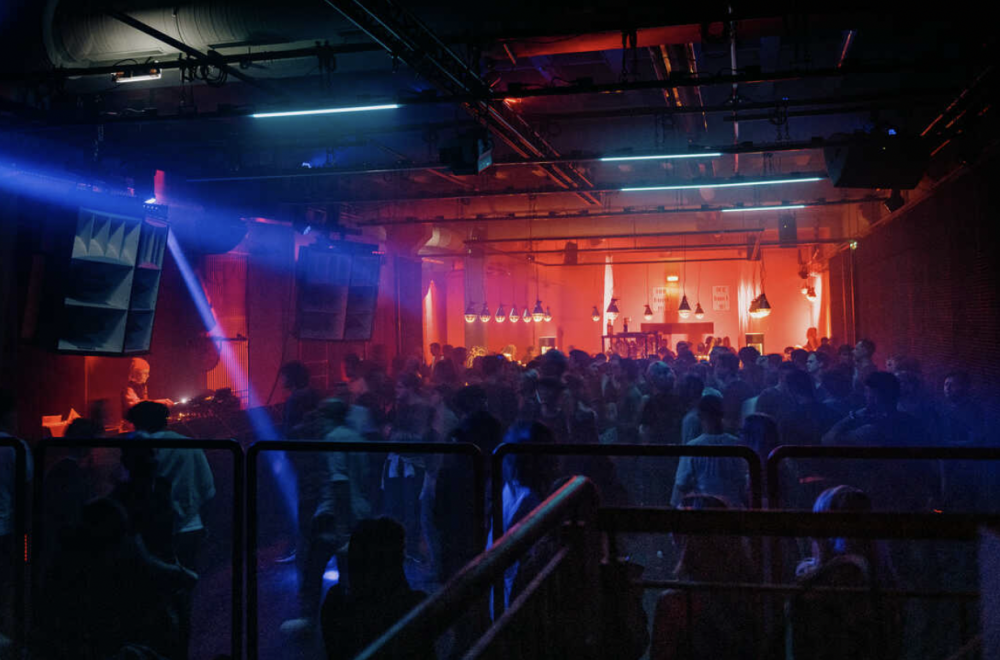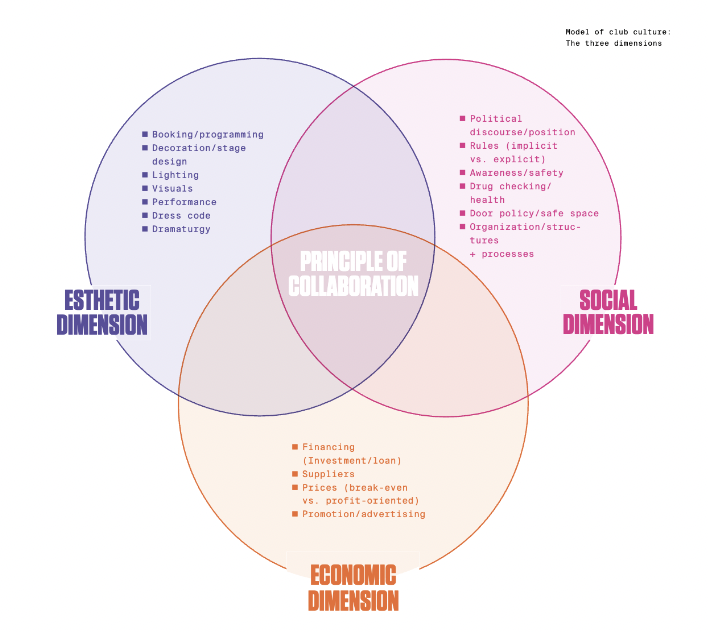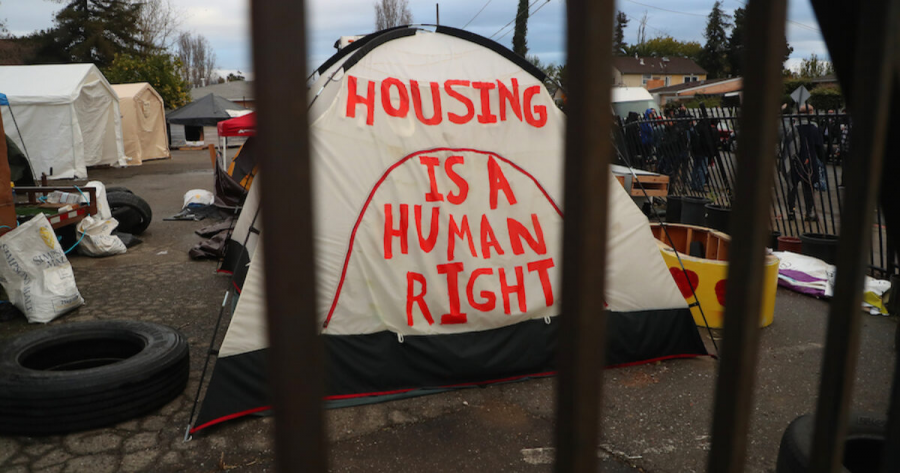
DIMA ZAYARUZNY – FEBRUARY 6TH, 2024
EDITOR: MICHAEL ATHANASSIADIS
In the streets of Berlin, the pulsating beats of techno music reverberate through abandoned warehouses and factories, echoing the city’s tumultuous history and its resilient spirit. Emerging in the aftermath of the Berlin Wall’s fall in 1989, techno swiftly found its roots in the vacant buildings of a reunified Berlin, transforming them into underground sanctuaries for music enthusiasts. These clubs, like Berghain (the Mecca of clubbing), Kit-Kat, and Watergate, didn’t just play music; they carved out an identity for a city in flux. By intertwining with Berlin’s cultural fabric and the city’s socio-political legacy, techno clubs have become a testament to Berlin’s adaptability, its defiance against conventional norms, and its profound economic impact on the city’s urban landscape. Not only are techno clubs pillars of Berlin’s identity, but they are also significant drivers of its economy.
To understand the complexity of the techno music scene, we must first understand the concept of the “translocal music scene.” This term, introduced by Andy Bennett and Richard A. Peterson in Music Scenes, explains that genres exist and blend between locations. For example, while techno beats blast in the dark, immersive clubs of Berlin, similar sounds echo in tropical Kuala Lumpur at the same time. This music, then, is bridged by a passionate community of fans united by their shared love for the genre. Each localized techno scene, though unique in its characteristics, adheres to the underlying ethos and sound of the genre, creating a global network of techno aficionados. Beyond mere musical connections, these translocal cultural scenes can be understood as intricate economic networks. The interconnectedness of the scenes allows for the exchange of music, talent, ideas, and capital, further amplifying the genre’s influence and economic footprint. DJs and producers travel to promote, perform, and collaborate in cities around the globe, leaving no shortage of labor to put on nightly shows. Every club has its own aesthetic and requires a large investment into lighting, decor, Berlin, in this context, stands not only as a hub for techno enthusiasts but also as a pivotal node in this sprawling, global techno economy.
Berlin’s techno scene has far-reaching economic implications that extend beyond its iconic club doors. In 2018, the Berlin Club Commission found that “club tourism brings in an estimated €1.5 billion to the city each year.” To compare, Germany’s largest, most famous, and most successful soccer team, Bayern Munich, brought in a measly €750 million of revenue that same year. Bayern Munich, a global mega-brand, was only able to bring in half the amount that Berlin clubs could alone! By drawing in a steady stream of techno-tourists keen on experiencing Berlin’s famed nightlife, these clubs contribute significantly to the city’s revenue and to the creation of myriad jobs spanning from DJs to club staff. This influx of visitors further bolsters the city’s tourism sector, filling up accommodations and increasing demand for local services. Specifically, surveys in 2018 showed that “three million tourists visited Berlin for its world-renowned nightlife, staying on average 2.4 days and spending €205 per day.”

The diagram above perfectly illustrates the ways in which different dimensions of club culture collaborate. The economic dimension will fail without input from the esthetic and social dimensions, and vice versa. Directly, the allure of the esthetic and social dimensions of the techno scene has sparked a ripple effect across the local economy. Berlin has remained, even after the COVID-19 pandemic, one of the cheapest capital cities in Western Europe: another reason the city attracts so many tourists. The areas surrounding popular clubs have seen a surge in local businesses aiming to cater to the techno crowd’s needs, from eateries to boutique stores. However, there’s been a noticeable impact on urban development. Gentrification in certain club-dense areas has driven up property values, reshaping the urban landscape. Many clubs have already closed as they are not able to keep up with those rising property costs. During and post pandemic, music clubs suffered economically and Berlin needed a solution. As stated by the Berlin Business Office, “music clubs have been declared as cultural institutions, shaping the identity of city districts as an important part of cultural and economic life.” Because of this, clubs are now “eligible for… tax breaks, permits that allow them to operate in broader areas of the city, financial aid to overcome the economic impact of the Covid-19 pandemic and more.” The city has made a choice and has deliberately decided to bolster the industry and encourage its economic and cultural revival. Another example of this commitment is to “establish a soundproofing fund with the city of Berlin” to ensure the neighborhoods remain livable. However, inflation and rising energy costs are putting strain on clubs’ profits, and the sector is still not performing as well as it was pre-COVID-19. Berlin, and even Berghain, have started to face and solve an identity crisis: how can they remain “underground” and affordable if costs are rising and everyone wants to visit?
As the global influence of Berlin techno continues to expand, it not only cements the city’s position on the world stage but also drives increased international investment and tourism. This global reach and the resultant economic influx highlight the potential techno holds, not just for Berlin but as a blueprint for other places. Cities worldwide can draw inspiration from Berlin’s success story, recognizing the potential of nurturing and leveraging local subcultures to create an identity for the city. By intertwining culture, passion, and economic strategy, Berlin’s techno journey offers a roadmap for urban centers looking to harness the economic potential inherent in their unique cultural identities. In essence, Berlin’s techno scene is a testament to the profound ways in which art and economy can harmoniously coalesce, creating ripple effects that resonate on a global scale. While being a cultural emblem of Berlin, techno has firmly rooted itself as a significant economic force that will continue shaping the city’s socio-economic trajectory for years to come.
Featured Image Source: NPR
Disclaimer: The views published in this journal are those of the individual authors or speakers and do not necessarily reflect the position or policy of Berkeley Economic Review staff, the Undergraduate Economics Association, the UC Berkeley Economics Department and faculty, or the University of California, Berkeley in general.



